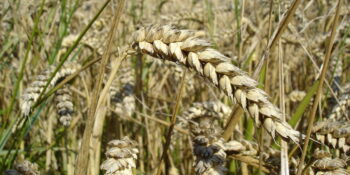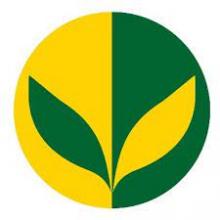Causing Damage
Depending on weather conditions, winged aphids migrate in late May to early June and in hot dry summers populations can increase quickly. Grain aphid, Sitobion avenae, causes direct feeding damage from flag leaf development through to dough ripe stages and feeds on the ears. It can cause significant yield losses and affect the quality of bread making wheat. Large amounts of honeydew are exuded on which sooty moulds quickly develop, giving the heads a dirty appearance. Infestations which develop later than the flowering stage are of less consequence economically. In the autumn it can vector BYDV.
Sitobion avenae, the grain aphid, is the biggest carrier of BYDV throughout the north of England. Rhopalosiphum paid, the bird cherry-oat aphid is the main carrier of BYVD in the south of England.
Appearance
The adult aphids are 2-3mm in length and the colour can vary from yellow, green, red or purple. Their siphunculi and antennae are black in colour.
Control Recommendations
The control of summer populations is recommended if aphids are present on more than 50% of the tillers at the start of flowering. Pyrethroid insecticides have provided relatively low-cost control but resistance to them is evolving. It is important that full recommended pyrethroid field rates are used. If control remains poor, a pyrethroid-based product should not be used again and growers should switch to an insecticide with an alternative mode of action.
Conservation of natural enemies such as parasitoid wasps and carabid beetles can reduce the need for insecticide use. Flowering field margins and other areas of uncropped land containing wildflower mixtures attract parasitoids and provide cover for other predators. Avoidance of pesticide use when aphid populations are low can help to conserve natural enemies, reducing the reliance on insecticides.
In the autumn, if aphids are invading, a pyrethroid spray is recommended when the first leaves appear to reduce BYDV risk. If the pyrethroid treatment does not work use an alternative insecticide because there could be pyrethroid resistance. By growth stage 31 (stem elongation) cereals are more tolerant to BYDV spread.
Related Links
Information and from Rothamsted's Croprotect webpage supported by BBSRC NERC Sustainable Agriculture Research & Innovation Club






